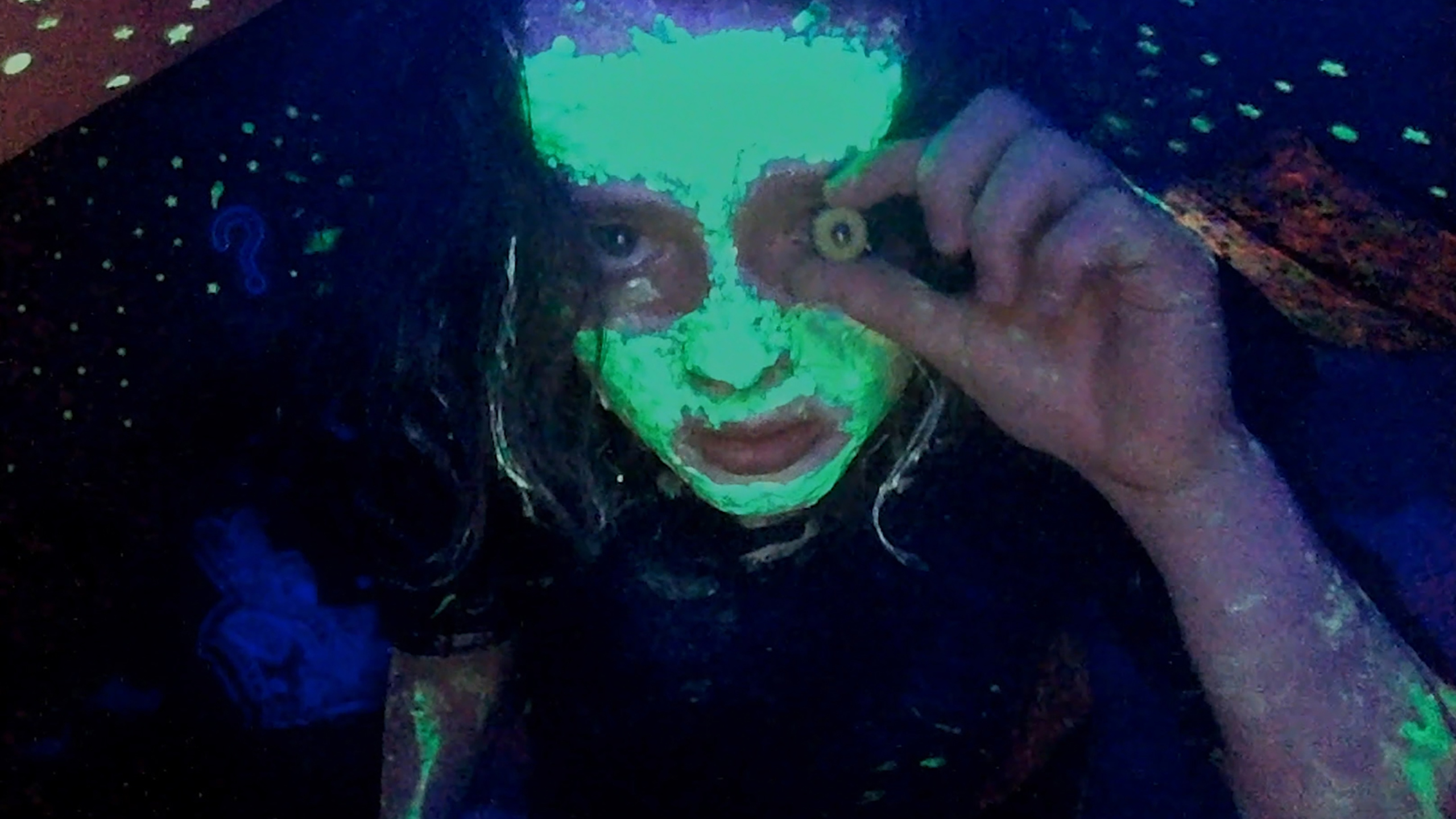
Sundance Film Review: We’re All Going to the World’s Fair
Film Reviews
We’re All Going to the World’s Fair
Director: Jane Schoenbrun
Dweck Productions and Flies Collective
Premiere: 01.31, 7:00 p.m.
As someone whose adolescence was inseparable from their exploration of the internet, I’ll always hold a fond memory of those formative years where the world became huge in both terrifying and exhilarating ways. We’re All Going to the World’s Fair offers an ode to this feeling, relishing in its complexity and its contradictions. The film centers around a Ringu–like internet challenge where users watch a creepy viral video and—purportedly—begin to lose control of their bodies and face off with a host of supernatural evils. We explore this darkness through Casey (Anna Cobb), a curious, lonely teenager who takes the World’s Fair Challenge, and MJR (Michael J. Rogers), the grown man who makes it his personal cause to protect Casey from the horrors of the World’s Fair Challenge at all costs.
In almost Peanuts-esque fashion, anyone outside of these characters’ world—save the audacious personalities from the many videos they binge—exists only as a blurred shadow, a lingering voice. We’re always right there with our lead pair, communicating only through instant messages and video chats, undertaking live-streamed sleep studies and uncovering the supposedly sinister layers of the World’s Fair Challenge bit by bit. The sense of fear is as real as our characters believe it to be, reaching its peak through Casey’s delirious song-and-dance scene and through MJR’s constant warnings and parent-like paranoia.
More than just singling out these characters, though, writer-director Jane Schoenbrun burrows us further into their subjectivity by blowing up the videos they create and consume onto the full screen. For a large majority of the film, we’re just watching their autoplay run or staring down at their listless expressions from the vantage point of their webcams. The blue-light insomnia is palpable, as is the sense of solitary unease whenever a random upload starts to feel a bit too real or the endless scroll cuts out.
Because of the way that Schoenbrun slips us into their characters’ world, We’re All Going to the World’s Fair engulfs the complicated emotions of this bizarre web journey and paints a vivid portrait of that liminal space between anxiety and wonder. When the World’s Fair Challenge truly begins, Casey’s face suddenly appears in a new video upload, her visage melted and warped into that of a ghoulish replica. The sense of fear remains until Alex G.’s sentimental score rises in and shifts the tone toward awe as Casey staggers at the realization that this transmission—however unsettling—means that someone is talking to her. World’s Fair excels at pinpointing this very specific emotional balance: the fear of the internet’s unknowns, its erasure of privacy and lawless interactions against the beauty of its limitlessness and the connection afforded by its global network of lonely souls.
So much of We’re All Going to the World’s Fair teases you with supernatural suspense, and so many moments stand on the verge of truly fantastical horror. But the film always draws us back in to realism, reminding us that the expanse only exists in pixels and bits. Like a dull gut punch, the most unsettling moments of the film (such as its hollow anti-climax) come when we’re reminded of the truth at the heart of this story: These are simply normal people doing weird shit on the internet. –Audrey Lockie
